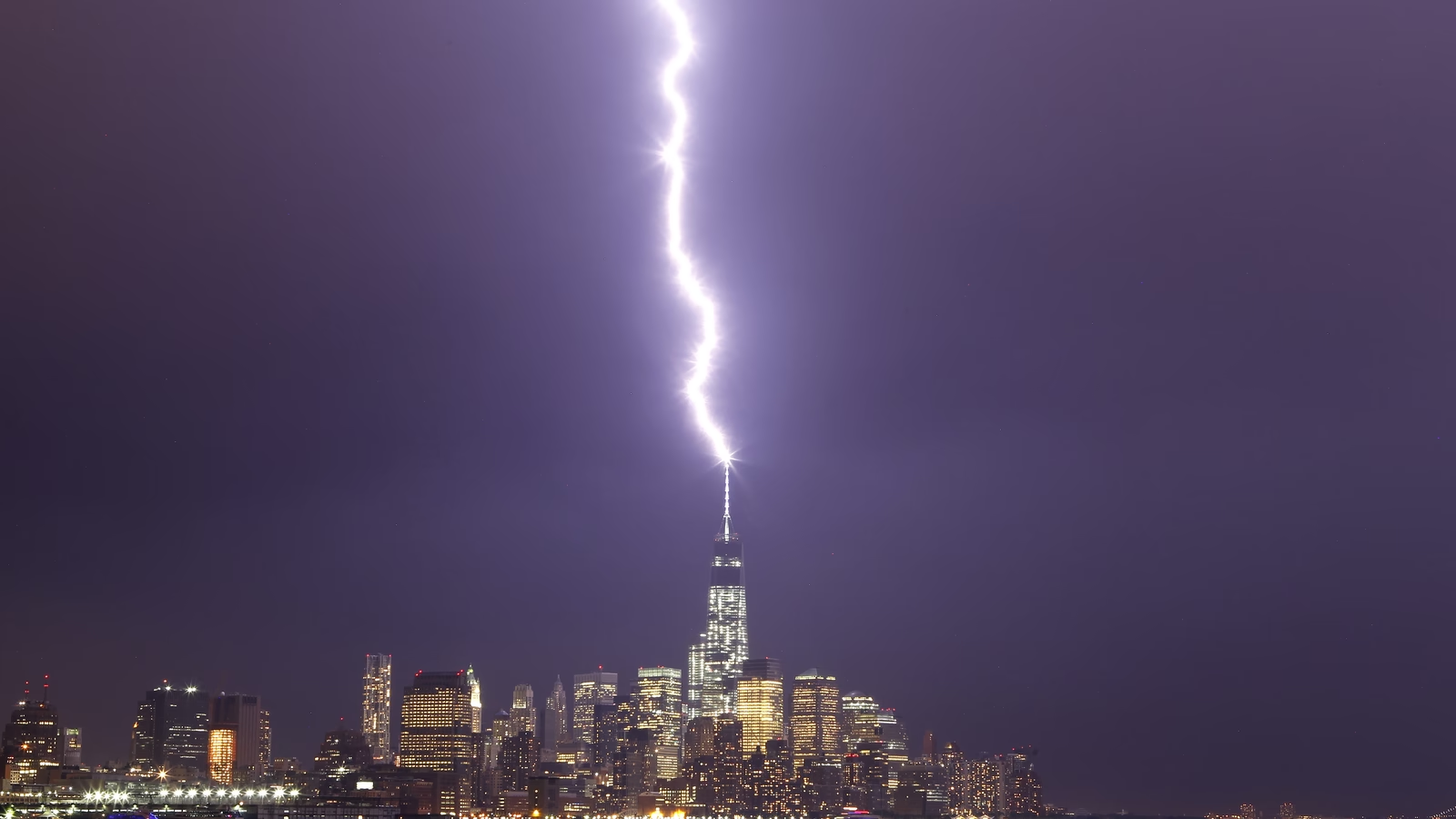
The lightning rod, a fascinating invention with a rich history, has long captured the imagination of scientists and engineers. Its purpose is to protect buildings and other structures from the destructive power of lightning by providing a safe path for the electrical discharge to reach the ground. This ingenious device has evolved over centuries, and its effectiveness in safeguarding lives and property has been widely acknowledged.
In this article, we will delve into 19 intriguing facts about the lightning rod, shedding light on its origins, functionality, and impact on modern society. From its early conceptualization to its integration into contemporary lightning protection systems, the lightning rod has left an indelible mark on the field of science and technology. Join us on this illuminating journey as we explore the captivating world of lightning rods and uncover the remarkable insights behind this remarkable invention.
Key Takeaways:
- Benjamin Franklin invented the lightning rod in 1749 to protect buildings from lightning strikes. It works by providing a safe path for lightning to reach the ground, preventing damage.
- Lightning rods are made of conductive materials like copper and are strategically placed on buildings to protect them from lightning. They don’t attract lightning but provide a safe path for it.
It was invented by Benjamin Franklin.
Benjamin Franklin, a renowned polymath, scientist, and statesman, is credited with inventing the lightning rod in His groundbreaking invention revolutionized the approach to lightning protection for buildings and structures.
The lightning rod functions by providing a low-resistance path to the ground.
This mechanism enables the lightning strike to be safely directed into the ground, thereby preventing potential damage to the structure it protects.
The pointed end of the lightning rod helps to facilitate the ionization of the surrounding air.
This ionization process assists in the gradual discharge of the built-up electrical charge in the atmosphere, reducing the likelihood of a lightning strike.
Lightning rods are typically made of conductive materials such as copper or aluminum.
These materials are chosen for their excellent electrical conductivity, durability, and resistance to corrosion, ensuring the effectiveness and longevity of the lightning rod.
The height and placement of lightning rods are crucial for their optimal functionality.
Strategic positioning and proper installation of lightning rods are essential to ensure comprehensive protection against lightning strikes.
Lightning rods are commonly used on structures such as buildings, bridges, and utility poles.
Their widespread application underscores the critical role they play in safeguarding various types of infrastructure from the destructive forces of lightning.
The effectiveness of lightning rods has been scientifically proven through extensive testing and research.
Their ability to mitigate the impact of lightning strikes has been validated, making them a trusted method for lightning protection.
Lightning rods do not attract lightning; rather, they provide a path of least resistance for the lightning strike.
This crucial distinction dispels the misconception that lightning rods attract lightning, emphasizing their role as protective devices.
The installation of lightning rods is governed by specific standards and regulations.
Adherence to these guidelines ensures that lightning protection systems are implemented in a manner that maximizes safety and effectiveness.
Lightning rods have evolved over time to incorporate advanced technologies and materials.
Innovations in lightning protection systems continue to enhance their performance and durability, reflecting ongoing advancements in engineering and materials science.
The concept of the lightning rod has inspired various artistic and cultural representations.
Its symbolic significance as a protector against destructive forces has been depicted in art, literature, and popular culture.
Lightning rods have saved countless lives and prevented immeasurable damage to property.
Their role in mitigating the devastating impact of lightning strikes underscores their profound societal impact.
The installation of lightning rods is a specialized field that requires expertise and precision.
Qualified professionals are entrusted with the design, installation, and maintenance of lightning protection systems to ensure their efficacy.
Lightning rods are an integral component of comprehensive lightning protection systems.
When integrated with other protective measures, such as surge protection devices and grounding systems, lightning rods contribute to a robust defense against lightning-related hazards.
The design of lightning rods can vary based on specific environmental and structural considerations.
Customized solutions are tailored to address the unique requirements of diverse settings, reflecting the adaptability of lightning protection technologies.
Lightning rods are a testament to human ingenuity and innovation in mitigating natural phenomena.
Their invention exemplifies the capacity of human creativity to devise solutions that safeguard lives and property.
The global impact of lightning rods extends across diverse geographical regions and industries.
Their universal relevance underscores the significance of lightning protection in ensuring the resilience of infrastructure worldwide.
Lightning rods continue to be an essential element of building codes and safety standards.
Their inclusion in regulatory frameworks reflects the recognized importance of lightning protection in construction and infrastructure development.
The legacy of Benjamin Franklin's invention endures through the widespread implementation of lightning protection systems.
The enduring relevance of the lightning rod underscores its enduring legacy as a pivotal advancement in the realm of safety and resilience.
The lightning rod stands as a testament to human innovation and the pursuit of safety in the face of natural forces, embodying the enduring legacy of Benjamin Franklin's revolutionary invention. Its widespread application and continued evolution reflect the unwavering commitment to safeguarding lives and infrastructure from the destructive potential of lightning strikes. As advancements in technology and materials continue to enhance the effectiveness of lightning protection systems, the enduring relevance of the lightning rod underscores its pivotal role in preserving the resilience of structures and the safety of occupants worldwide.
Conclusion
In conclusion, the lightning rod is a remarkable invention that has significantly contributed to the safety of buildings and the prevention of fires caused by lightning strikes. Understanding the science behind lightning rods and their role in protecting structures is crucial for ensuring the safety of individuals and property. As we continue to advance technologically, the principles behind the lightning rod remain as relevant and essential as ever, serving as a testament to the enduring impact of scientific innovation in safeguarding our lives and assets.
FAQs
What is the purpose of a lightning rod?A lightning rod is designed to protect buildings and structures from damage caused by lightning strikes. By providing a preferred path for lightning to follow, it helps to safely conduct the electrical charge into the ground, thereby preventing potential fires and structural damage.
How does a lightning rod work?A lightning rod works by creating a low-resistance path for lightning to travel through. When a lightning strike occurs, the rod intercepts the electrical discharge and conducts it safely into the ground, away from the structure it is designed to protect. This process helps to dissipate the energy of the lightning strike, reducing the risk of damage.
Lightning rods have played a vital role in protecting structures from devastating lightning strikes. Their fascinating history and scientific principles continue to captivate minds. If you enjoyed learning about this ingenious invention, consider exploring other intriguing topics. Delve into the complex legacy surrounding Confederate monuments and the debates they ignite. Get to know the life and adventures of professional skateboarder Bam Margera, from his early days to his iconic status. For nature enthusiasts, Mount Thielsen holds breathtaking secrets waiting to be discovered. Each subject offers a unique perspective on history, culture, and the wonders of our world.
Was this page helpful?
Our commitment to delivering trustworthy and engaging content is at the heart of what we do. Each fact on our site is contributed by real users like you, bringing a wealth of diverse insights and information. To ensure the highest standards of accuracy and reliability, our dedicated editors meticulously review each submission. This process guarantees that the facts we share are not only fascinating but also credible. Trust in our commitment to quality and authenticity as you explore and learn with us.


